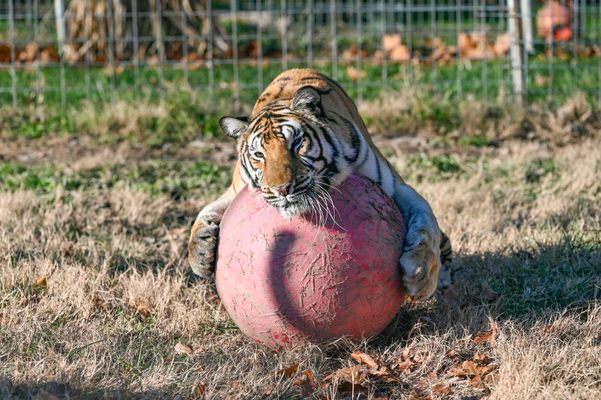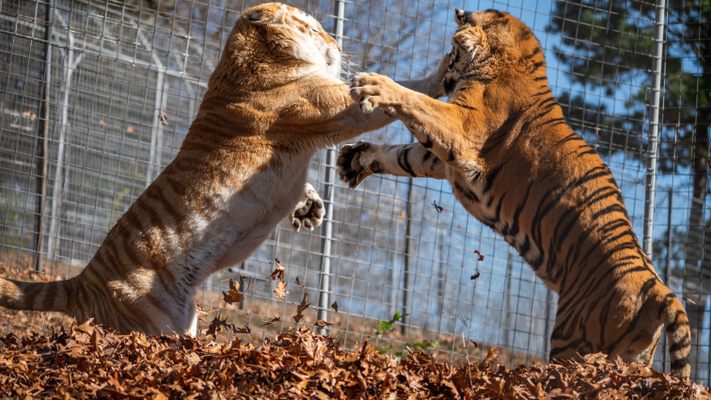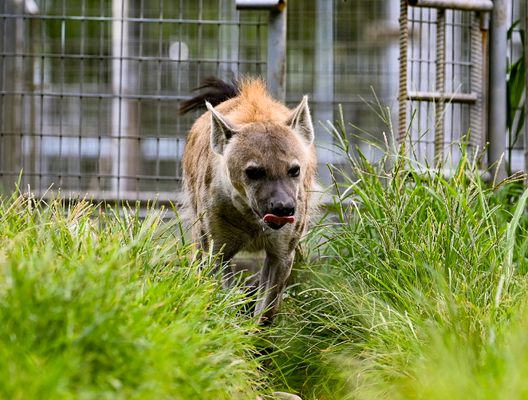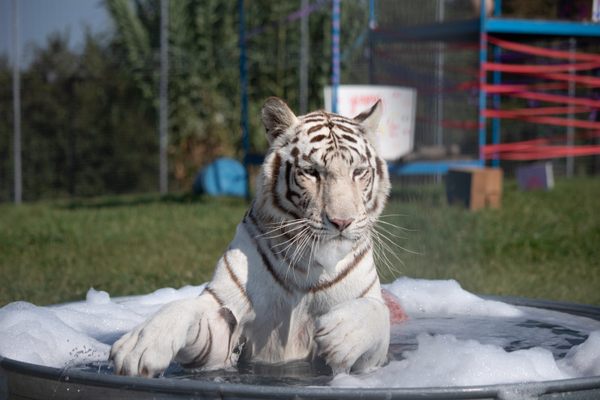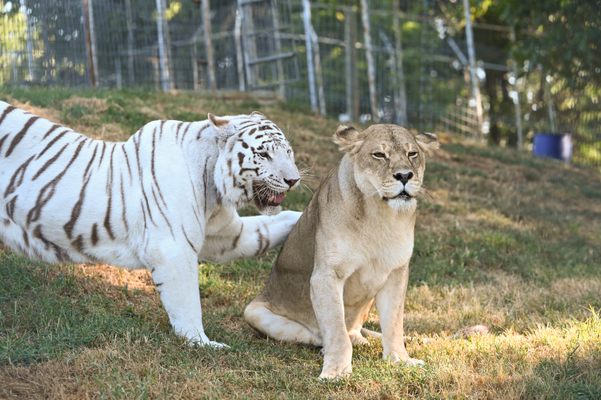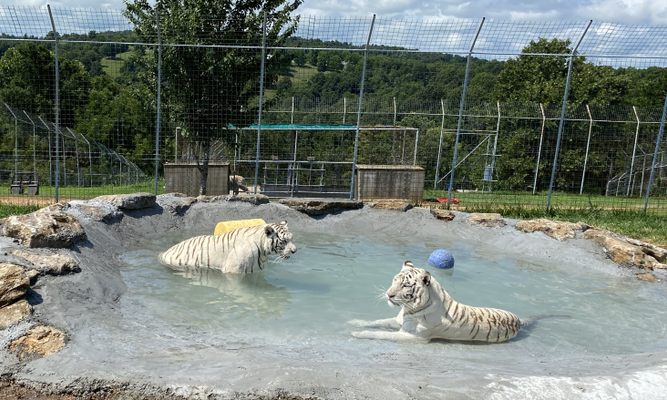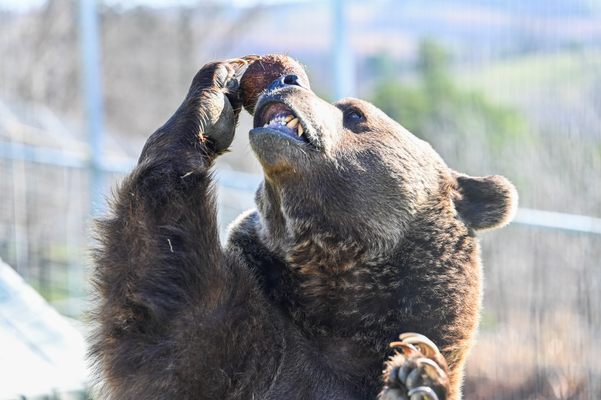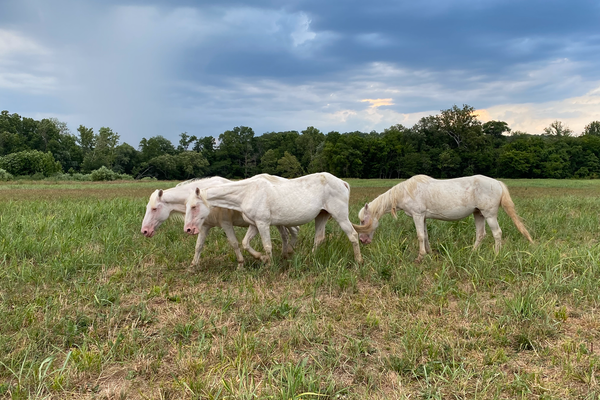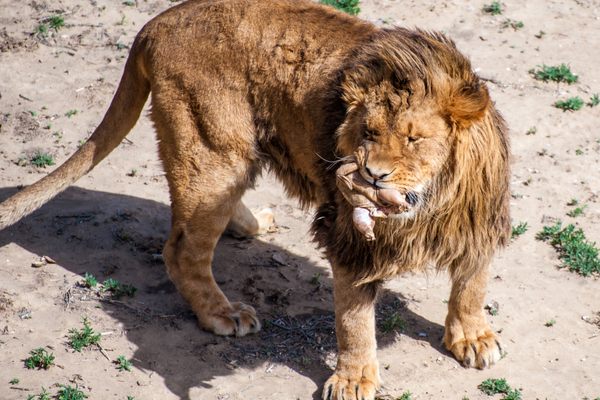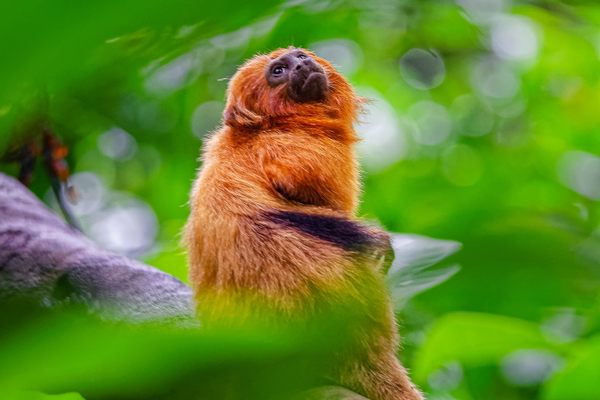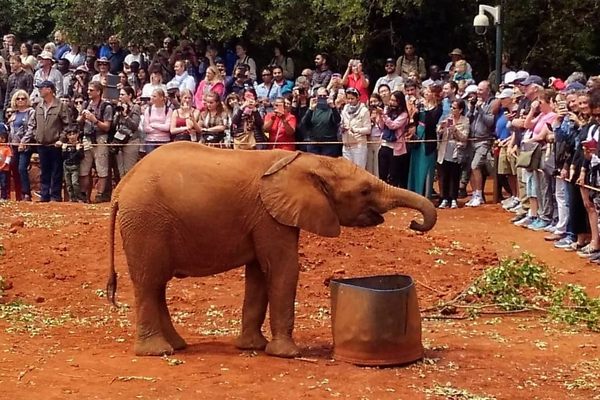About
The illegal wildlife trade ensnares around 200 million animals in the United States alone, despite a handful of federal laws aimed against it. It can be difficult to extract these wild animals from the trade, but facilities exist to help survivors live out the fullest lives possible once rescued. Turpentine Creek Wildlife Refuge is one such facility.
One of the most respected and accredited rescue operations in the country, Turpentine Creek is a 460-acre facility cresting a wooded mountaintop just outside Eureka Springs, Arkansas. It’s home to about 100 animals including lions, tigers, and bears, but also servals, bobcats, hyenas, and hybrid species. Once fodder for an illicit trade, these majestic creatures are now free to laze about in freshwater pools, play with oversized toys, and groom each other in between meals—and visitors are able to witness it all up close while supporting their rehabilitation.
With no set entry times, guests can spend as little or as much time as they’d like meandering Turpentine Creek’s sprawling property. Each animal resident is given a name and housed individually (with the exception of siblings who were raised together and can safely cohabitate). A major facet of the facility’s rehabilitation philosophy is enrichment, which gives animals an approximation of the mental stimulation and exercise that they would have in the wild. It can take different forms depending on the animal and season. Tigers, for example, love crashing through big piles of leaves; lions love to tear apart pumpkins; acorns are scattered about the bear enclosures so they can “scavenge” for snacks; they all seem to love perfumed or scented playthings as well. From wading pools to giant chew toys to rope ladders, the animals are provided with engaging elements to keep them active and happy.
While animals come and go, Turpentine Creek is currently home to brown bears, black bears, and grizzly bears; bobcats, cougars, leopards, jaguars, and servals; and while, of course, there are lions and tigers, the facility is also home to a number of artificial hybrids including ligers (lion father, tiger mother), tigons (tiger father, lion mother), ti-ligers (tiger father, liger mother), and li-ligers (lion father, liger mother). Perhaps the rarest animal on-site is a set of “Strawberry Tigers,” or “Golden Tabbies,” who are the children of one white tiger (another artificial species) and one orange tiger.
The animals here have come from private ownership, zoos to which they never fully acclimated, or outright abandonment. In fact, the refuge got its start after rescuing 42 big cats packed into several abandoned cattle cars by outlaw Catherine Twiss in 1991 (more recently, 18 big cats came into the refuge’s ownership directly from the infamous Joe Exotic of Tiger King fame). Animals often arrive in bad health from malnourishment, poor breeding practices, declawing, and other ailments. The staff of an on-site veterinary hospital treats and monitors each animal resident for the duration of their stay. To avoid sedation, which can be dangerous to the animals, new residents are trained to hold out their paws (for inspection), to sit and stand (to assess joint and bone health), and to present their flanks (to make injections easier). In fact, if visitors show up before opening time, they’re able to watch this training live.
If visitors want a round-the-clock experience, that’s also on the table. Turpentine Creek offers several lodging options, from a primitive campground, to glamping, to air-conditioned lodges with back decks looking out onto big cat habitats. Overnighters may, for example, hear a pride of rescued lions—who boast the loudest call in the animal kingdom—caroling to each other throughout the night.
Related Tags
Community Contributors
Added By
Published
November 8, 2022
